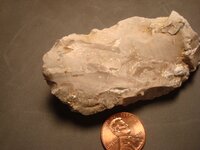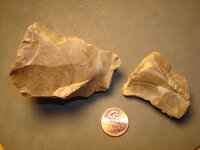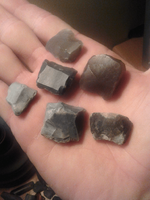BigDave2727
Tenderfoot
- May 28, 2012
- 9
- 1
- Primary Interest:
- Relic Hunting
Flint Core Finds and Questions
Sorry for the very rookie questions, but I'm quite new to this (haven't really found much on my own). I've recently come across what I believe to be flint cores in an area near a river. I'm able to find this stuff pretty easily on the ground, but most of what I'm finding are large chunks, usually a bit bigger than what is shown in the second picture below. I haven't found any significant debitage or artifacts. There are some significant sites across the river, but nothing known too close on the side of the river I'm looking on.
My questions are:
1) Am I right that this stuff is flint?
2) Does this stuff look like it was percussion or pressure flaked in any way?
3) What does it mean that I'm finding larger flint chunks? (Am I in a good spot / why am I not seeing debitage)?


Thanks,
Dave
Sorry for the very rookie questions, but I'm quite new to this (haven't really found much on my own). I've recently come across what I believe to be flint cores in an area near a river. I'm able to find this stuff pretty easily on the ground, but most of what I'm finding are large chunks, usually a bit bigger than what is shown in the second picture below. I haven't found any significant debitage or artifacts. There are some significant sites across the river, but nothing known too close on the side of the river I'm looking on.
My questions are:
1) Am I right that this stuff is flint?
2) Does this stuff look like it was percussion or pressure flaked in any way?
3) What does it mean that I'm finding larger flint chunks? (Am I in a good spot / why am I not seeing debitage)?


Thanks,
Dave
Last edited:
Upvote
0




